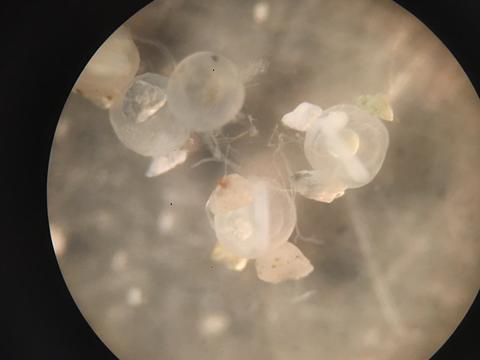“I can’t believe I used to put sand in my mouth as kid,” I said out loud in disbelief. Today, I am tasked with analyzing the different samples we collected across various beaches for our Forage Fish Spawning Habitat Monitoring project. After these samples have been collected in large Tupperware containers, MABRRI team members begin to process the beach sediments using a sieving and vortex method that separates all the larger matter from the very fine grains of sand particles (and hopefully eggs). Eventually, we are left with less than a quarter cup of sand that is stored in a fridge to be analyzed at a later date.
Once all samples have been collected and processed, it is time to begin the search! I begin by taking out one of the mason jars from the fridge in the MABRRI office. The mason jar is filled with beach sediment and a tag indicating which beach it came from. I place a small portion of the fine beach sediment onto a petri dish and position it underneath the microscope. Carefully, I sift through the sand in each container searching for a small translucent egg that somewhat resembles caviar (see below!); it’s like finding a needle in a haystack! The eggs I am hoping to locate belong to either Pacific sand lance or surf smelt. These fish are the main prey type for several different species including humpback, seals, seabirds, and salmon – a keystone species here on the island and a main food source for resident killer whales. Evidently, these fish are extremely important for the sustainability for our marine wildlife.
Today, I didn’t find any eggs. What I did find was plenty of incredible looking organisms and sediments that I had no idea were buried inside the same sand I used to play with. While searching through the microscope I came across hundreds of worms that would dance across the lens, thousands of bright sand particles that contained every colour of the rainbow, and plenty of dead creatures that I could not in a million years identify. It was both a breathtaking and stomach-churning experience all at the same time!
I am very excited to be a part of the Forage Fish research project here at MABRRI. The results we find may help influence policy and management practices that protect various spawning habitats so that Pacific sand lance and surf smelt are here for many generations to come.

